One of the most disgusting animals we often encounter around us (Mouse)
Did you know, there are several types of mice that we often encounter around us. This time I will discuss it, maybe you can be used as a reference for rodent control around you.
Rattus rattus
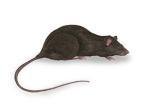
- Length 16-24 cm, with tail longer than head and body.
- Weight 150-200g
- Nose tapered, large ears and slim body when compared with Rattus norvegicus type roof mice.
Life cycle
- Once gave birth to 5-10 children, 3-6 births per year.
- Pregnancy period of about 3 weeks.
- 12-16 weeks from birth to sexual maturity.
Habit
- Frequent climbing, agile, seldom digging and rarely outside the room.
- The preferred food is moist fruit.
- Eat about 15g of food and drink 15ml / day.
Mus domestikus
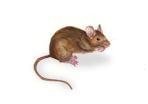
- Length 7-9.5cm, long tail equal to body.
- Weight 12-30g
- The legs are relatively small, the head and large eyes of the ear distinguish them from the large brown rats.
Life cycle.
- Once gave birth to 4-16 children, 7-8 birth per year.
- Pregnancy period of about 3 weeks.
- 8-12 weeks from birth to sexual maturity.
Habit.
- Usually live and dig the ground, but often climb.
- The selected foods are those containing cereals.
- Will eat about 3g of food a day and can survive without additional water, they will drink up to 3ml a day.
Apodemus sylvaticus
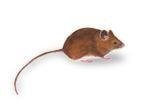
- Adult; Head and body 80-100mm; 70 tail-90mm.
- Males weigh 25g, 20g females.
- They have a sandy feather / orange brown head and back, yellowish side-sides and white pigmented. Usually there is a small yellow stroke on the chest.
Life cycle.
- Their age averages 20 months in the wild or 2 years more in captivity.
- The breeding season is in March / April-October / November and pregnancy lasts about 25 days, grows their first reed after 6 days; Their eyes open after 16 days; And they were weaned in about 18 days.
- The defense system of young and adult is very little and in the adult male mating season can be aggressive with each other and to the young and then expelled from the nest.
Habit.
- They eat a high proportion of plant tree seeds such as oak, beech, ash, hawthorn lime and sycamore.
- Small snails and insects are an important food source in late spring and late summer when most seeds are not available and abundant insect larvae.
Rattus norvegicus
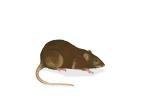
- Length up to 40cm, with short tail of head and body.
- Weight 350-500g.
- Nose pug, small ears and body thicker than the roof rats.
Life cycle.
- 7-8 children once giving birth; 3-6 births per year.
- Pregnancy period of about 3 weeks.
- 10-12 weeks from birth to sexual maturity.
Habit.
- Usually live and dig the ground, but sometimes climb. Species occur only disbursements disposal in Indonesia.
- The selected foods contain cereals.
- Eat about 30g of food, drink 60ml per day.
Perameles nasuta
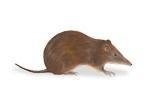
- Long pointed nose
- Tapered ears.
- Short thin tail.
- Humped
- Fur gray-brown though lighter in the abdominal area.
- Head and body length 12-16 ''.
- Bandicot has a bag open from behind.
Life cycle.
- Bandicot has a very high breeding rate for animals their size and a very short pregnancy period of 12 days.
- Parent gives birth to 6 babies crawling in bags until weaned for about 9 months.
Habit.
- They live in densely populated areas with plants.
- They are usually active at night and terrestrial, hiding in concave logs or nests during the day. They build nests from plant material such as twigs and leaves.
- They can cause damage to the habitat - gardens and farmland such as rice fields.
- Feeding habits of insects, worms and plants.
Kalau boleh saya tau apa saja sih penyebeb bayaknya tikus,kerna yang saya lihat bayak sekali tikus yang berkeliaran di luar,terkadang ada juga yang masuk ke dalam rumah. Apalagi di sawah tikus bayak berkeliaran dan merusak padi. Tolong kasih saran pada saya untuk membasmi yang namanya tikus.